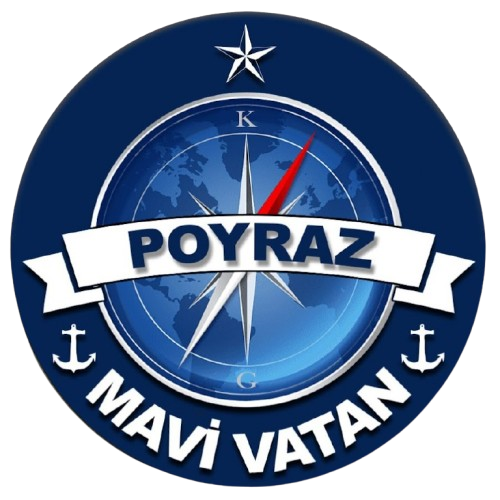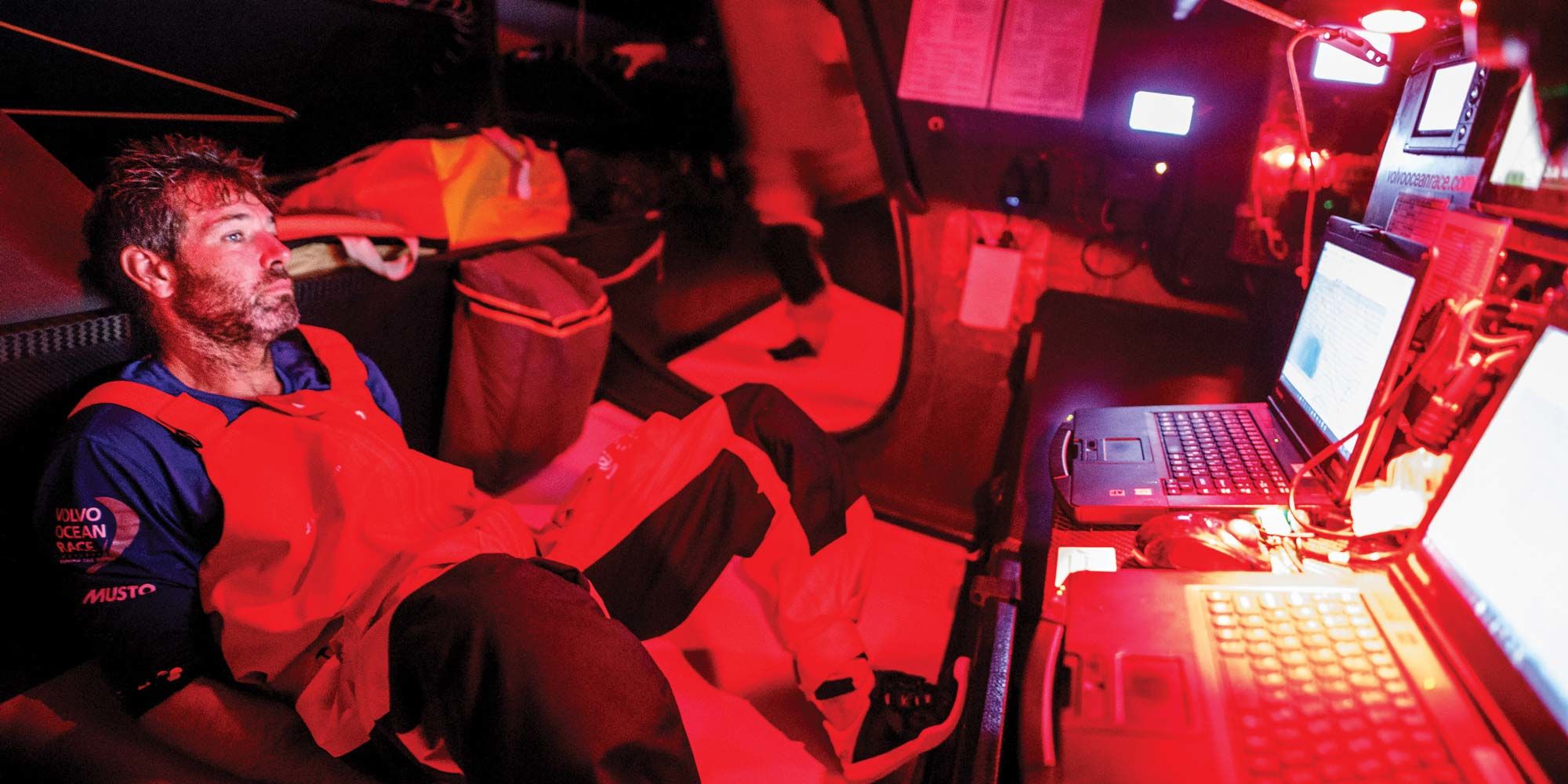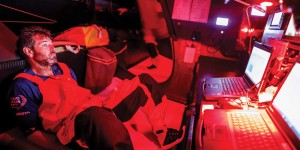Portugal’s Ferdinand Magellan is credited with the first sailing circumnavigation of the planet. His crew completed it in 1522, after Magellan’s death in the Philippines a year earlier. We have 500 years of experience, which should be plenty of time to understand and document the vicissitudes of sailing around the world.
For the first 300 years or so, knowledge of the planet’s currents and weather patterns passed by word-of-mouth — if it passed on at all. Matthew Fontaine Maury, an American, is responsible for the first efforts to gather and publish the collected learnings of the seafaring community, after he was put in charge of the Depot of Charts and Instruments in Washington, D.C., in the mid-19th century. The depot held logbooks of thousands of voyages, and Maury realized the gold mine at his disposal.
He analyzed these logs, looking for patterns. He found them, and in 1847, he published Wind and Current Chart of the North Atlantic, followed by Sailing Directions and The Physical Geography of the Seas and Its Meteorology. These works provided the foundation for what we would now call weather-routing strategy, the use of climate patterns and oceanographic models to optimize the way we get across vast and dynamic oceans.
This information is beautifully and comprehensively communicated in routing charts. Wind roses show the expected meteorological conditions for each month of the year, along with data on storm frequency, currents, sea and air temperatures and ice limits. This is information that has been distilled from weather readings taken on thousands of individual voyages.
All of this knowledge was available when we began competitive circumnavigations under sail; singlehanded in the Golden Globe in 1968 and crewed in the first Whitbread in 1972. In time, these blueprints became ocean race lore — a basic set of rules to guide strategy. I’ve used this lore on the six occasions that I’ve written strategic commentaries for circumnavigations because it simplifies a complex topic. Let’s explore a few.
Head south out of Cape Town, and turn left when it’s blowing 40 knots. This deals with leaving the subtropical high-pressure zone that often envelopes the Cape of Good Hope, encouraging crews to go south (almost perpendicular to the actual course) until they are fully into the westerly storm track.
Don’t let anyone get west of you as you go into the doldrums. This one tells us that the doldrums get narrower from east to west across the Atlantic. So, it always makes sense to be the most westerly boat as you leave the trade winds and enter the doldrums. Again, getting west means going perpendicular to the course to the destination.
The temptation in both cases is to try to take a shortcut, but the lore didn’t become lore without good reason. This is the very best collected wisdom on weather routing, going back to the clipper ships and beyond; crews disregard the race lore at their peril — for whatever reason.
On Leg 6 of the 2017-2018 Volvo Ocean Race, the fleet was racing south down the western Pacific from Hong Kong to Auckland. The doldrums stood in their way, running east to west. The most logical way through them would be to focus on getting south once you hit the light winds — and this is the time-honored race rule for a doldrums crossing.
On February 15, Team AkzoNobel was leading Mapfre, Team Brunel and Dongfeng Race Team. The weather forecast showed there would be more wind to the east just as they hit the doldrums. And when they started to slow, Mapfre and Dongfeng Race Team turned left toward the east, and AkzoNobel went south.
AkzoNobel came through the doldrums first, and was soon back up to speed and headed for Auckland. Dongfeng and Mapfre got stuck on the northern edge, with no wind and a long way to go before they would find any. By the time they got going, AkzoNobel was a couple hundred miles ahead.
The left turn when they hit the doldrums was a mistake, but these guys were no slouches. The navigators — Pascal Bidégorry on Dongfeng and Juan Vila aboard Mapfre — are two of the best practitioners in the game. Vila has been going round the world since 1989-90, and won the Volvo Ocean Race in 2001-02 with illbruck. He’s done eight America’s Cup campaigns and won the trophy three times. Bidégorry is among the French offshore racing elite, having won the Solitaire du Figaro and the Transat Jacques Vabre. So, what was going on here?
“One of the jobs of the navigator when deciding a strategy is how much trust you put on weather models and the routing,” Vila says. “There are parts of the world where models are very accurate, but there are also instances where model output has little value.
“In Leg 6, as we approached the doldrums entry, some models were suggesting a long detour to the east to find a better place to cross. But in Leg 4 [sailing through the same area in the opposite direction], we experienced the models performing poorly in that area.
“In these cases, navigators normally default to general rules of thumb, like local knowledge, past experience, climatology studies and generic strategies. One general rule is once you get into the doldrums, you cross as perpendicular as you can, from north to south (or south to north), and this was our intention in this case.
Today’s navigator is subject to greater pressure and has a lot more information, all of which is not necessarily helping.
“But another factor we always consider is our direct competitors. When weather strategy considerations are not strong, what your competitor does becomes an important factor on deciding where to go. We normally want to have reasonable confidence in the weather strategy to make a split. And that was what happened in this case; by making sure we were staying in the same water as a direct competitor [Dongfeng], we both ended up making a longer easterly route.”
When they got ashore, they talked to Dongfeng and learned their plan had also been to go south. Unfortunately, the forecast had made each team believe it was plausible that the other boat wanted to go east, so they had ended up both leading and trailing each other the wrong way — leaving AkzoNobel to make a huge gain and take a fine leg win into Auckland.
In retrospect, it seems such a simple mistake for two of the best in the world to make. But aside from the detail of this specific decision, when considering what’s involved in strategic decision-making in these races, mistakes like this should be the norm. They should happen all the time rather than being occasional blips.
These guys are not making decisions in the air-conditioned comfort of their offices or armchairs. The navigation station of a modern offshore racing boat is a terrible environment for problem solving. It’s cramped. It’s damp. It’s either too hot or too cold, and if there’s any wind, it’s being flung around all over the place.
Imagine trying to read a financial prospectus in such conditions, or even the instructions for a piece of flat-pack furniture. It takes a great deal of practice, and — even when you’re good at it — it takes a great deal of effort to shut out the discomfort and focus on the work.
The modern navigator also has a high dependence on IT. Electronics do not mix well with salt water, high temperatures, humidity and slamming. Modern equipment is more reliable than ever before, but it can still be a frustrating business. Plus, there will be people trying to sleep, cook, move sails, repair stuff, bail the boat, shoot videos, go to the toilet, clean their teeth, apply sunblock, dress, undress and half a dozen other things. No one multitasks effectively.
Multitasking requires the brain to switch from one thing to another, requiring mental time and effort. Dr. John Medina’s book Brain Rules suggests that being forced to multitask heavily (process a position report, deal with a query from on deck, download files, move sails to tack the boat, check the radar for clouds, get out of the way of someone trying to find their foul-weather trousers, etc.) means it will take 50 percent longer to accomplish a single task, with 50 percent more errors.
Six hourly position reports and the delivery of new weather forecast files does create a timeline around which the navigator can schedule rest. The navigator, however, will be woken at any moment because something has changed, whether that be an opponent in visual sight that has gone for a different sail, the wind direction has shifted unexpectedly, the windspeed has dropped, the targets can no longer be achieved, the course can no longer be held, and so it goes on.
Sleep deprivation makes decision-making difficult. Research published in the British Medical Journal concluded, “After 17 to 19 hours without sleep … performance on some tests was equivalent or worse than that at a [blood alcohol content] of 0.05 percent.” That’s like trying to make race-critical decisions after chugging a couple of beers.
All of this we already know. Not much has changed since the early races — except that they had wine and beer in the bilges and were more than happy to make decisions after glasses with dinner.
Today’s navigator is subject to greater pressure and has a lot more information, all of which is not necessarily helping. Forty years ago, the only data available was the windspeed and direction, the temperature, barometric pressure, the clouds and the set of strategic rules that had its antecedents back in the work of Maury. And I doubt anyone would have turned sharp left on entering the doldrums. It was the forecast that made it plausible in 2018.
The weather fax was the start of a dramatic transition to the modern era — and with it came weather-routing software, which uses the boat’s known performance and the weather forecast to calculate the optimal route through the varying wind field between the boat and the destination. This can lead to so-called “analysis paralysis” — similar to the feeling one gets when faced with 23 different kinds of white bread in a supermarket. There’s no longer one weather forecast; now there are many, many different weather forecasts. How to choose?
There are major weather bureaus in most large developed nations, and they will often be running global models, any one of which could be used to develop a race strategy. This problem can be resolved to some extent with research into which is best in particular areas — Vila referred to this process. Ensemble forecasting works by running sets of forecasts together to see the range of predictions. It provides an excellent way of visualizing areas of uncertainty, where the forecasts diverge in their predictions.
In sailing, when the leaders go one way and — despite there being a very good reason for taking an alternative — everyone else follows, averse to the potential losses.
Picking a forecast, or group of forecasts, however, is just the start point of the analysis. Other parameters, such as the weather-routing calculation, can be changed. The forecast can be slowed down or sped up; it can be shifted in space as well as time. Ensemble forecasts can be used, or any number of individual ones.
The possibilities are endless, and so is the rabbit hole into which someone can disappear if they search for a complete and final solution. It’s easy to lose sight of the big picture when faced with so much detail. This is a world in which it can come to make more sense that an opponent will turn left when you hit the doldrums.
This is not the end of the story though, because there’s even more at play in the head of the tired, stressed, distracted, overanalyzing navigator. We know we are prone to bias, to unreasonable or irrational behaviors. The recent Nobel Prize won by Richard Thaler for his work in behavioral economics is further recognition for a revolution that’s been going on for a while.
The basic idea is that human beings are hard-wired to make mistakes, a whole category of errors that psychologists call cognitive bias — systematically flawed judgments that are a consequence of ingrained ways of thinking.
These psychological biases are the foundations of Thaler’s work, and they provide a new way of looking at how real people function in the complex world of money, incentive and human fallibility — it also provides insight into how they can misstep out on sport’s field of dreams.
Michael Lewis famously and unknowingly revealed a cognitive bias when he told the story of Billy Beane, general manager of the MLB’s Oakland A’s. Moneyball was Lewis’ best-selling account of how Beane used big data to help the A’s, one of the poorest teams in the majors, beat bigger, richer teams. The problem Lewis describes in Moneyball is called representativeness; in that instance, it is judging athletes by appearance, by old-school scouting, instead of assessing performance objectively by data analytics.
Lewis was unaware when he wrote Moneyball that psychologists had already identified and named this judgment bias. It is an error he corrected with The Undoing Project, a book about the two Israeli psychologists at the heart of all this — Daniel Kahneman and Amos Tversky, who together wrote the original academic paper on representativeness. Kahneman later won a Nobel Prize for his work in this area, but representativeness is just one in a long list of ways identified by Kahneman, Tversky and their intellectual heirs in which humans fail to make rational judgments.
A common one at play in fleets, from club racing to the Olympics, is loss aversion. People hate losses — psychologists have shown that the dislike of losing something is about twice as strong as the love of gaining it. This is often demonstrated with a simple bet — I’ll toss a coin; if it’s tails, you pay me $10. The question is: How much would I have to offer you for a heads to get you to take the bet? When it’s tested on large groups, the answer is usually around $20. People need to have a chance to win double what they could lose to take a 50-50 bet like a coin toss.
We see this in sailing when the leaders go one way and — despite there being a very good reason for taking an alternative — everyone else follows, averse to the potential losses from taking the optional strategy.
On the third leg of the Volvo Ocean Race, through the Southern Ocean from Cape Town to Melbourne, a massive low pressure developed. It was forecast to slam into the fleet with storm-force winds in excess of 60 knots. For a couple of days, the teams had opportunities to get north, where conditions were expected to be less intense.
The downside of going north was that it was a detour, losing miles to any boat that stayed south and survived the storm. It was a balance of risk management — it was a big, dangerous storm — versus speed and performance. Initially, only two of the boats in the fleet took the opportunity to get north, Turn the Tide on Plastic and Vestas 11th Hour Racing, and the latter subsequently rejoined the bulk of the fleet before the storm hit. The losses going north were guaranteed. The losses of staying south were not; after all, the boat might come through that storm intact.
It’s likely that a second cognitive bias was also at work here; namely overconfidence. It’s everywhere in our society. It’s well known that small businesses, particularly restaurants and cafes, have failure rates of about 50 percent, but no one who stakes their life savings and a massive loan to open a coffee shop seems to really believe that they are betting everything on the same odds as the toss of a coin. It was likely that those teams that hung on in the south to avoid making losses were also overconfident about their ability to ride out the storm and take what’s coming.
How did it play out? AkzoNobel paid the price of its ambition with a bad jibe that damaged its mainsail and mast track. It eventually finished last for the leg, behind the more conservative Turn the Tide on Plastic.
After all this, it does indeed seem more surprising that anyone ever makes a good decision in the navigator’s hot seat than a bad one. The quality of much of the decision making in the most recent Volvo Ocean Race was — when you fully consider the circumstances — remarkable, which is perhaps why bad choices stand out.
But there’s one more thing I’d add to the decision path when choosing long-distance offshore racing strategies. When all the weather-routing solutions have been run, the options considered, the calculations concluded, I’d ask one final question: What would Maury do?
If the godfather of weather routing was out there with just the windspeed and direction, the temperature, barometric pressure, the clouds — and, of course, a well-thumbed copy of Sailing Directions and Physical Geography of the Seas and Its Meteorology — then what would he do? If the plan wouldn’t have made any sense to Maury, then I’d start thinking that I need a really, really good reason for following it through.
Let’s finish back where we started, with yet another example from the most recent Volvo Ocean Race. The fleet was racing through the South Atlantic to Cape Town in Leg 2. Mapfre and Dongfeng Race Team were high-tailing it south to dodge the high pressure to their east and pick up a low-pressure system in the westerly storm track. To their east, Team AkzoNobel was ignoring conventional wisdom and trying to shortcut a route to the east.
All the southern boats eventually advanced to the top of the leader board, with AkzoNobel hanging onto fourth. They were more than 60 miles behind Mapfre, which went on to win the leg. Maury would have bet the house on that outcome.
Source: sailing world








